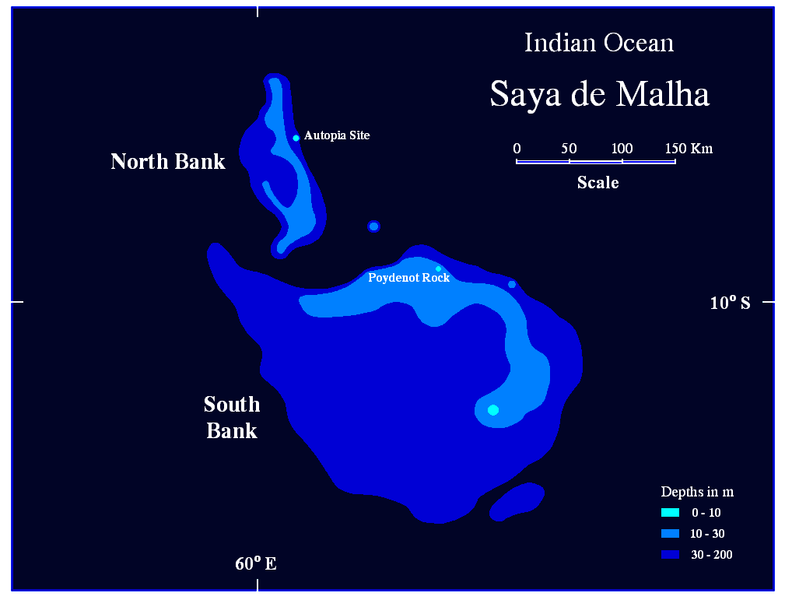Saya de Malha Bank

The Saya de Malha Bank (also Sahia de Malha Bank, Modern Portuguese: saia de malha, English mesh skirt) is the largest submerged bank in the World, part of the vast undersea Mascarene Plateau. It lies east of Madagascar, southeast of the Seychelles, and north of the Nazareth Bank, the Cargados Carajos shoals, and the island of Mauritius, and falls into the Mauritian exclusive economic zone. The closest land is the tiny Agalega Islands (a remote dependency of Mauritius), some 300 km further west, followed by the southern Seychellois island of CoŽtivy, some 400 km northwest. Mauritius administers Saya de Malha Bank as part of its Exclusive Economic Zone.
The bank covers an area of 40,808 km2 (15,756 sq mi),[1] and is composed of two separate structures, the smaller North Bank (also called Ritchie Bank), and the huge South Bank. If the South Bank were recognized as a submerged atoll structure, it would be the largest of the world, almost three times the size of the Great Chagos Bank, commonly considered the largest atoll structure of the world. Even smaller North Bank would be one of the largest atolls worldwide. The North Bank and the South Bank appear to have different origins, since they are separated by a fault. Studies show that the South Bank and the Great Chagos Bank were one single feature until about 64 to 69 million years ago, when an ocean ridge opened between them and started pushing them apart.
Saya de Malha Bank consists of a series of narrow shoals, with depths from 17 to 29 meters on the rim. They are arranged in a semicircular manner, around a space, the former lagoon, about 73 meters deep, which slopes on the Southeast. Some areas of the bank are shallow, less than 10 meters below the surface. The shallowest sites known are Poydenot Rock, at a depth of 8 meters, and an unnamed site 145 km further northwest, with a depth of 7 meters. The banks are covered with sea grass interspersed with small coral reefs. Due to its remote location, the bank is among the least-studied shallow marine ecoregions on the planet. The banks are a breeding ground for Humpback Whales and Blue Whales.


